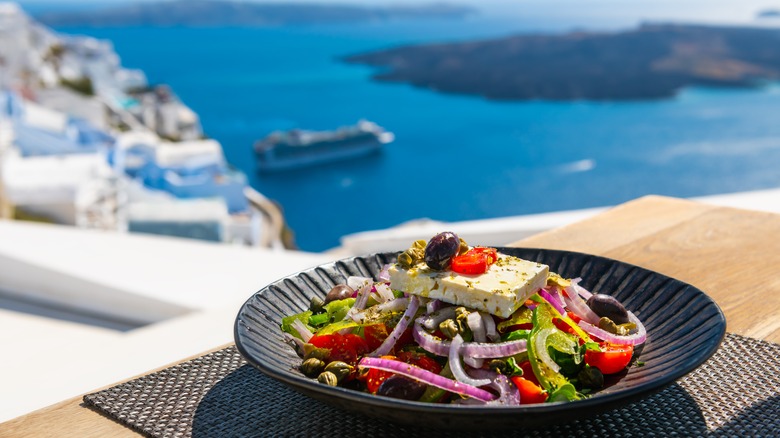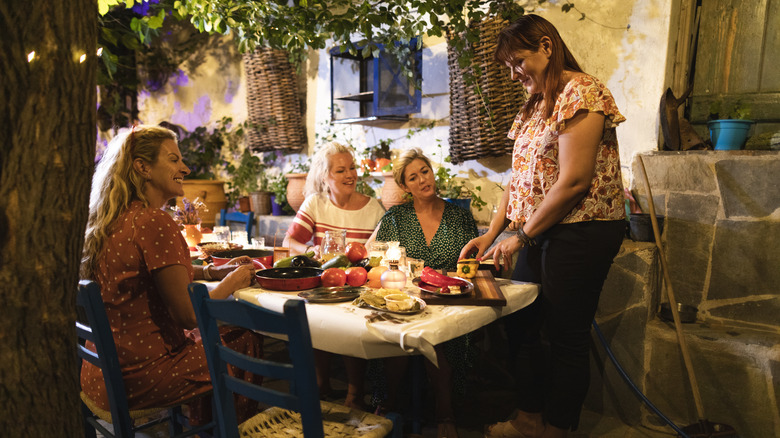Lunchtime In Greece Used To Be A Much More Serious Affair
In the United States, lunchtime has never really been a big event — save for a special occasion such as a Sunday brunch, the midday meal in America will likely consist of a small sandwich, salad, or leftovers from dinner the night prior. However, meals are served quite differently in other countries and cultures, such as Greece.
Until very recently, residents of Greece would not simply grab a quick bite and continue on with their day; lunchtime was treated as a sit-down event with a wide spread of dishes. Greek hospitality expert Aby Saltiel spoke with Food and Wine about the noticeable shift in how and when people in Greece enjoy different meals. "Lunch until recently was a full-size family meal," he said, where families would unite to eat together.
Traditional foods included vegetable stews or casseroles, along with various cheeses, salads, and even wine. Lunchtime was the most significant meal for most Greeks until recently, as work schedules have changed and European countries have become more accustomed to the traditional 9-to-five work structure like those in the United States.
What's on the menu during a typical day in Greece
Residents of Greece have never believed in the phrase, "Breakfast is the most important meal of the day." Even ancient Greeks did not prioritize their morning meals, which they called "Acratisma." They would often eat pieces of bread dipped in wine and paired with olives or indulge in a pancake-like flatbread with honey and cheese if they had a larger appetite. Nowadays, an average Grecian breakfast consists of a slice of pie such as spanakopita, other baked goods, yogurt with honey, and seasonal fruits. Because of their light take on breakfast, people indulged in hearty, fuller lunches. But nowadays, most working adults don't have time to prepare and consume a large meal during their lunch break and instead opt for a salad, sandwich, or pasta dish. It is also customary to enjoy an afternoon coffee around 5 p.m., which gives locals the energy boost needed to make it to the large portions of food at dinnertime.
Here's what to expect when you are dining in Greece
When visiting Greece, expect to enjoy a light lunch with some type of Greek salad or fresh greens involved, and get ready to wait longer than you might prefer for dinner. Dinnertime is a nocturnal event in Greece, with most families gathering for their most significant meal of the day when the sun has already set. Aby Saltiel told Food and Wine that Greeks eat so far into the day that it is "very late, almost vampire time."
While the national average for dinner time in America is just after 6 p.m., residents of Greece are most likely to sit down for dinner between 9 and 10 p.m. When visiting Greece, you might want to pack a few snacks between lunch and dinner to hold you over – most authentic restaurants are not likely to be open from 3-5 p.m. due to the long-standing tradition of siesta. Businesses in many European countries, including Greece, will close down shops and services in the middle of the day out of respect for "quiet hours" so that workers may rest, eat, and get ready for the remainder of their work day. If you really want to live like locals during your Grecian vacation, consider taking a nice long nap after lunch. Besides, you'll still have plenty of time before your 9 p.m. dinner reservation.


